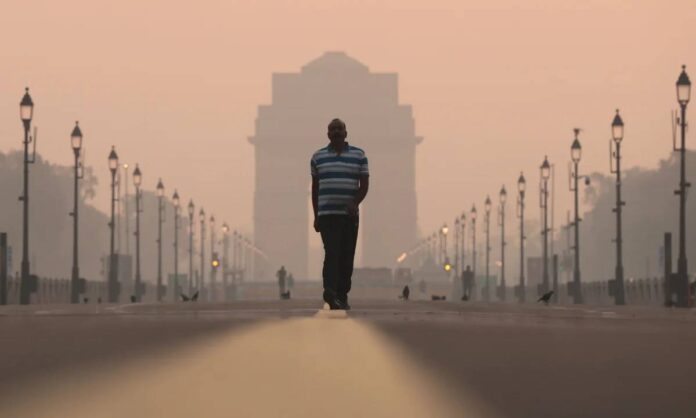Imagine a line drawn in the sand, invisible to the wind, smoke, and smog. It’s called a border. Yet, the choking air above Lahore and New Delhi doesn’t care about that line—it flows freely, carrying a deadly warning. This is no longer just an environmental issue; it’s a call for survival. Could this shared crisis be the key to unlocking dialogue between India and Pakistan?
Both countries are no strangers to conflict. Since their independence in 1947, India and Pakistan have fought wars, engaged in endless disputes, and let distrust shape their policies. But now, a silent and invisible enemy—air pollution—is ravaging cities on both sides of the border. Perhaps it’s time for both nations to set aside their hostility and face a common challenge together.
Every winter, the story repeats itself. Falling temperatures trap toxic pollutants close to the ground, creating a thick, deadly smog that blankets Lahore and New Delhi. According to a 2023 IQAir report, South Asia remains the most polluted region in the world, with air quality indices in these cities often exceeding 300 PM2.5—a level dangerous to human health. For perspective, anything over 100 is considered unsafe.
This is not just an inconvenience. It’s a matter of life and death. Children struggle to breathe, hospitals fill up with patients suffering from respiratory diseases, and flights are delayed as visibility plummets. The smog doesn’t discriminate. It doesn’t stop to check passports. It is a shared crisis demanding a united solution.
In Pakistan, Punjab Chief Minister Maryam Nawaz Sharif has proposed dialogue with Indian officials to tackle this environmental disaster. However, “If this can bring Pakistan and India together, along with other countries, why waste this opportunity?” Said Raja Jahangir Anwar, Punjab’s secretary for environment and climate change
This isn’t just idealism. Cooperation on environmental issues has worked in the past. The Male Declaration of 1998 brought South Asian countries together to address air pollution, proving that even in a region as politically tense as this, collaboration is possible. Hosting a regional climate conference in Lahore, as Pakistan is considering, could reignite such efforts. As Pakistan is considering hosting the Regional Climate Conference in Lahore by the end of the year.
Some may argue that India and Pakistan have bigger issues to deal with—security concerns, trade disputes, or historical grudges. But none of those problems will matter if we can’t breathe. Climate change and air pollution are existential threats that demand immediate action. If this crisis doesn’t wake us up, what will?
The truth is, neither India nor Pakistan can tackle this alone. Air pollution doesn’t respect borders, and neither can solutions. Joint efforts—like sharing technology, enforcing stricter emission regulations, or planting cross-border green belts—could pave the way for trust-building and cooperation.
The smog choking South Asia is more than a public health disaster. It’s a reminder that the challenges we face are too big for any one country to handle alone. For India and Pakistan, this could be a moment of reckoning. Will they let this opportunity slip away, or will they finally take a breath together and act?
The winds don’t recognize borders. Maybe it’s time we stopped pretending they do.




